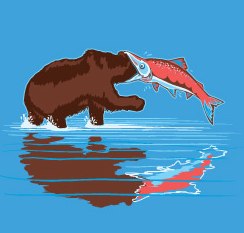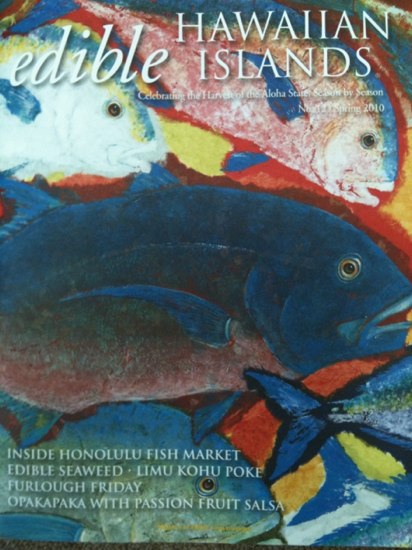Blog
News, updates, finds, stories, and tidbits from staff and community members at KAHEA. Got something to share? Email us at: kahea-alliance@hawaii.rr.com.
How is fishing like aquaculture? Trick question. It’s not.
Does an industrial fish farm count as fishing? Apparently, NOAA says “yes.” To permit an experimental open ocean fish farm operation, NOAA is looking to grant a corporation (Kona Blue Water Farms on Hawai`i Island) a fishing permit and call its fish farm cages “a new, unlisted gear type.”
Ahi Feedlot Abandons Ship!

Mahalo to all who took action in the last few months, asking the Army Corps of Engineers to hold a public hearing on a permit to allow Hawai’i Ocean Technology, Inc. (HOTI) to build a proposed 247-acre ahi tuna feed lot off the Kohala Coast. 100% of the feed for this project would be imported from fisheries in places like Peru, and 90% of the tuna they feedlot will be exported to Japan and the continental U.S. (Does this sound like local food sovereignty to you? Not so much.)
Last week, we got news that HOTI has withdrawn their permit application. They may still be looking to do a smaller one-cage “experimental” operation. We’ll keep you updated. But for now, count this is a victory for the ocean. Mahalo for your action! Thanks to you, we’re a little closer today to a collective vision of food sovereignty and a functioning food system for Hawai’i. To learn more or to join the hui in support of pono aquaculture, you can go to www.ponoaqua.org
Monster Salmon. And not in a good way.

They came for our taro. Is it any surprise that fish is next on the list? Today, federal officials in the U.S. are considering approval of the first genetically modified fish. GMO-salmon. Ick.
Salmon are sacred. It’s time to show our solidarity for indigenous peoples, first nations, and fishing and nearshore communities the world over. We’re a fish and poi culture, and we’ve got to be concerned about genetic modification of native species. Genetic modification is a part of a broken industrial food system that just doesn’t work. It isn’t serving communities, farmers, fishers, or consumers. We want sovereignty… over what’s on our plates. And we’re saying no to untested, unlabeled GMO foods.
From our friends at Food and Water Watch:
Franken-Fish have won the race to be the first genetically engineered animal approved for human consumption. The aquaculture industry has genetically engineered a fish that grows at twice the normal rate, so they can get it to market sooner and make more money.
The scary thing is, the FDA doesn’t do its own testing of genetically engineered animals, it relies on information provided by the company that wants approval. And because GE salmon are being considered as a new animal drug, the process isn’t focused on what happens to people who eat genetically engineered animals. So on top of the health concerns posed by raising salmon in crowded factory fish farms that rely on antibiotics and other chemicals, the FDA could be adding the unknown risks of GE salmon to the mix.
The FDA is the same agency that’s in charge of overseeing the egg industry, and we see how well they’ve done that job. The FDA does not have the capacity to ensure the safety of food that is not genetically engineered, they certainly should not be in charge of allowing the first GE animal into our food supply.
We’ve got just 12 days until the FDA takes formal steps to approve GE salmon, so it’s up to us to demand that President Obama direct the FDA to reject this request.
Take action to stop this mutant fish from reaching your plate:
http://action.foodandwaterwatch.org/p/dia/action/public/?action_KEY=4693
(Illustration at top is by the talented Glenn Jones at threadless.com. His GE Salmon shirt is now sold out!)
Antifouling Causes Paler Fish
From Marti:
Study in Sweden found that new antifouling chemical medetomidine (used to prevent the buildup of barnacles, seaweed/marine organisms on the cages/nets of open water fish farms) causes paler fish, affecting the skin cells that contain dark pigment. It also appears to affect a detoxifying enzyme in the fish’s livers, which could result in lessened ability to filter environmental toxins (like PCBs or mercury!)
Looks like, in the race to replace TBT to keep fish farm nets and boat bottoms critter-free, it’s back to the drawing board.
See full article at: http://www.thefishsite.com/fishnews/12238/antifouling-causes-paler-fish
Thousands March Against Fish Farms in B.C.

Close to 5,000 people gathered this past weekend, the culmination of a 500 km march, led by biologist Alexandra Morton, to protest open ocean fish farms and the impacts they are having on wild fish in British Columbia. As we open our doors to open ocean farms for ahi in Hawai’i, do we have something to learn from their experience in B.C.?
See video: http://www.globaltvbc.com/video/index.html?releasePID=tVSow1MygokzZOHDBa99s317z8BmiyTn
From Dr. Neil Frazer, a UH Professor (SOEST) born and raised in British Columbia:
In BC, native peoples (called “First Nations”) are very angry with farms. Near farms they have lost their subsistence fishing, their salmon and clams.
Many BC tourism companies are very unhappy because sportfish and wildlife have greatly declined near farms. Farmers have shot many marine mammals.
Salmon farming in BC is controlled by two large Norwegian companies: Marine Harvest and Cermaq.
First Nations from BC have gone to Norway twice to plead with the Norwegians to move their farms. Imagine native Hawaiians having to fly to Norway some day to plead for removal of farms.
Many lawsuits against sea-cage farmers are now in the BC courts. Solid citizens are marching down the highways in protest. It’s a mess.
Problems with sea-cage farms are not confined to BC. Many people in other countries are very unhappy with sea-cage fish farms.
Hawaii should look into it. Why import the mistakes of other countries?
Greed for Feed: Connecting the Dots
Today, Hawai’i is looking at a proposed new offshore ahi tuna farm–the very first ever to be approved for waters under U.S. jurisdiction. Of course, to raise fish that eat fish (carnivorous fish), you need… fish. Fish like anchovies, generally taken from fisheries around the global south, particularly Central and South America.
The fact that a significant amount of the fish caught on this planet goes to make fish meal (for feeding fish and other farmed livestock) is a growing concern for world health and food security (Global and Regional Food Consumption Patterns and Trends, World Health Organization, Section 3.5).
The 247-acre operation proposed for Hawai’i, to be run by Hawaii Ocean Technology, Inc., will require 12,000 tons of fish feed annually, at full operation (according to its own EIS, prepared by Tetratech).
This short movie–”The Greed for Feed”–is testament to some of the impacts that fish feed harvesting has had on coastal Peruvian communities.
When we talk about aquaculture and “food security” in Hawai’i… is this what we mean?
Reading: Edible Hawaiian Islands

This issue of Edible Hawaiian Islands is devoted to fish, fishing, and fisheries. How fish gets from the sea to your plate, and everything in between.
Some interesting ideas on the future for “sustainable” fisheries by Jon Letman, and on raising fish “Loko” style by Rob Parsons.
We’re liking: Rob’s interview with Michael Kumuhauoha Lee, of the ‘Ewa Beach Limu Restoration Project–
Lee believes that modern Western aquaculture systems run into difficulties by trying to maximize dollar output, and by not looking at how true natural resource systems of abundance are created. “It is the Hawaiian belief,” says Lee, “that everything is a living being. The outer fishpond rock walls are like the skin–they are porous and allow zoo-plankton to pass through. Plankton and algae are among the most basic life forms.
“The fresh-water springs are like a circulatory system,” says Lee. “It is essential to set up a diverse biosphere, and to plant and seed the limu to attract the fish into the pond. Don’t disregard the vitality of the elemental systems, the safeguards and the knowledge that is already here.”





